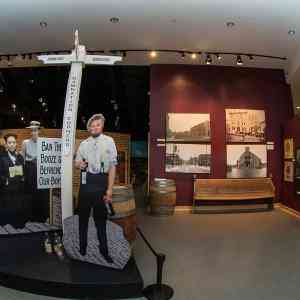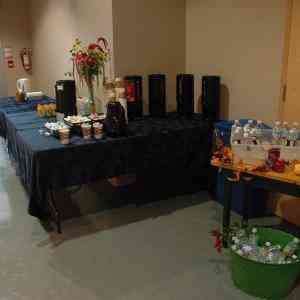Thanksgiving Closure
Grey Roots Museum & Archives will be closed Oct 12, 13 & 14.
Grey Roots Museum & Archives will be closed Oct 12, 13 & 14.

On May 28, 2014, it will be the 80th anniversary of the birth of the Dionne Quintuplets. The two surviving sisters now prefer to be known as the Dionne Sisters. Back in 1934, however, they were the world-wide sensation of the “Dionne Quintuplets”, and their amazing survival created a celebrity distraction during the Great Depression. The five girls were born near the village of Corbeil, near Callandar, Ontario. They were the first quintuplets known to have survived infancy. They had five older siblings, and three more brothers would be born after them, but the quintuplets tended to bond to each other during their growing years. Their family was an average farming family. When the five sisters were born, Dr. Allan Roy Dafoe and two midwives assisted their mother, Elzire Dionne. The babies, who were two months premature, were not expected to live, but did. They were placed into a wicker basket, and had heated blankets placed on them. Four months after their births, custody was withdrawn from their parents, and the provincial government put them under the care of Dr. Dafoe, and two other guardians, ostensibly to protect them from exploitation. However, the government’s action actually resulted in the sisters being made into a tourist attraction, as the “Dafoe Hospital & Nursery” that was built for them (and their non-family caregivers) had an outdoor playground designed as a public observation area. Millions of people travelled there over the next few years to view the sisters. They were frequently studied and tested, were determined to be “identical”, and they were dressed accordingly. Their daily lives were rigourously-scheduled, and they had very little normal contact with the outside world. They were mostly kept in their compound, were privatelytutored, and rarely saw their family. Their likenesses were used to advertise commercial products such as Quaker Oats and Karo Corn Syrup, and many souvenir items and dolls were made using them as a theme.
I remember, likely in the 1970s, reading an article about the sisters in the magazine Chatelaine. I felt so sad for the disruption of their young lives, caused by extreme celebrity and the profiteering that occurred from their images. Even when they were reunited with their family in 1942, life was not happy for them, as they disclosed in later years that they suffered abuse with them. In 1952, at the age of 18, they all left home. Emilie Dionne died in 1954 at the age of 20, from an epileptic seizure. Marie died in 1970 from a blood clot, at the age of 35. Yvonne Dionne died in 2001. Annette and Cecile are the last of the sisters.
At Grey Roots Museum & Archives, we have a full set of Dionne Sisters spoons. There is a different pose for each sister, and each one’s name is on the shank. A collectibles site mentioned that Carleton Silverplate made Dionne quintuplet spoons that were used by the Palmolive Soap company as a premium. People would buy soap and pay ten cents in order to get the spoon they needed to complete their set of five. The sisters were about six years old at the time. The set at Grey Roots was made by Carleton Silverplate, and collected in Owen Sound, Grey County. The woman who collected them didn’t want to exploit the children, she just likely thought that they were amazing and cute, as many others did.

Your membership will grant you access not only to Grey Roots, but also to our partner museums!

Volunteers participate in learning workshops and seminars, meet new people and make new friends, and receive many benefits.

We rent our multi-media theatre and Delton Becker Room to the community. The 75 seat theatre is an excellent venue to host films, lectures and other events.